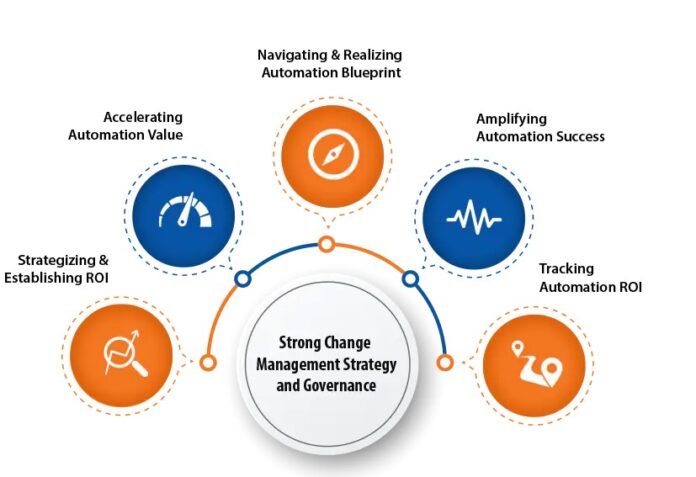An omnichannel contact center is a pivotal element in modernizing and optimizing customer service. It is a strategy that allows businesses to adapt and thrive in today’s competitive marketplace, where customers have high expectations for seamless and personalized interactions. In this comprehensive guide, we have explored what an omnichannel contact center is, its benefits, key features, and strategies for implementation.
What is an Omnichannel Contact Center?
An omnichannel contact center is a customer service approach designed to provide a seamless, consistent, and personalized experience across various communication channels. Unlike traditional contact centers that operate in separate silos, an omnichannel approach breaks down these barriers, enabling customers to engage through their preferred channels while maintaining continuity throughout their customer journey.
This approach integrates and synchronizes communication channels, ensuring that customer interactions are managed across various platforms and recorded as a unified conversation. Regardless of whether a customer initiates a conversation via email, social media, or phone, the contact center agents have access to the entire customer history, previous interactions, and context. This holistic view of the customer journey is one of the hallmarks of an omnichannel contact center.
Omnichannel vs. Multichannel Contact Centers
It’s important to differentiate between omnichannel and multichannel contact centers. While both offer multiple communication channels for customer service, there are key distinctions:
– Omnichannel: In an omnichannel contact center, communication channels are integrated with backend systems, enabling agents to access real-time customer information and maintain a unified view of the customer journey. This results in more personalized interactions and continuity throughout the customer experience.
– Multichannel: Multichannel contact centers also offer customer service through multiple channels, but each channel operates independently. There is no synchronization between channels, leading to potential information gaps. If a customer switches from a phone call to email, for example, the agent may not have access to the prior conversation, leading to repetition and frustration.
Benefits of Omnichannel Contact Centers
The adoption of omnichannel contact centers offers numerous benefits to both businesses and customers. Here are some of the key advantages:
1. Decrease Customer Churn:
High-quality service and personalized interactions empower agents to provide better support, increasing customer satisfaction and loyalty. When customers’ needs and expectations are met, they have fewer reasons to switch to competitors.
2. Improve Response Times:
Omnichannel contact center software enhances the chances of customers reaching the right agent on their first attempt. By monitoring all communication touchpoints, agents can promptly respond to inquiries, regardless of the channel used.
3. Increase Personalization:
Access to comprehensive customer information allows support agents to personalize interactions. They can see customer profiles and conversation history, eliminating the need for generic scripts.
4. Collect Better Data:
Omnichannel contact centers streamline data collection, enabling comprehensive reporting on daily and long-term trends, customer service KPIs, and agent performance. This data-driven approach facilitates informed decision-making.
Features of an Omnichannel Contact Center
Omnichannel contact centers are powered by specialized software that provides essential features for effective omnichannel customer service. Some of the key features include:
– Interactive Voice Response (IVR): IVR systems streamline customer interactions by allowing them to navigate and receive information through voice commands.
– Analytics and Reporting: These tools provide insights into agent performance, customer interactions, and contact center operations, allowing for data-driven decisions.
– Third-Party Integrations: Seamless integration with third-party applications and systems enhances productivity and enables a unified view of customer data.
How to Create an Omnichannel Call Center Strategy
To successfully implement an omnichannel call center strategy, businesses should follow a structured approach. Here are five steps to create an effective omnichannel call center strategy:
1. Map Out the Customer Journey:
Create a comprehensive customer journey map that outlines each touchpoint and provides insights into the customer’s experience. Understand where customers interact with your business and their preferences.
2. Identify Channels and Data Collection:
Identify the communication channels that are most relevant to your customer base and business goals. Also, determine the key performance indicators (KPIs) and data to collect for accurate measurement.
3. Deploy the Right Software:
Choose omnichannel contact center software that aligns with your business needs. Ensure it offers essential tools like IVR, analytics, and third-party integrations.
4. Train Your Team:
Provide thorough training for your team on the new processes and software. Ensure they understand the changing customer journey and how it affects their roles.
5. Remove Internal Silos:
Foster collaboration among departments to share customer information. Sales, marketing, and customer service should work together to provide a complete customer view, as data hoarding can hinder business growth.
Omnichannel Contact Center Best Practices
After implementing an omnichannel contact center strategy, it’s crucial to manage operations effectively. Here are some best practices to ensure a smooth and productive operation:
1. Optimize Workflows with AI and Automation:
Leverage AI and automation to streamline processes. Implement intelligent skills-based routing, chatbots, virtual assistants, and predictive analytics to enhance efficiency and personalization.
2. Improve Internal and External Knowledge Bases:
Maintain comprehensive internal knowledge bases for employees to access when resolving customer issues. Create external knowledge bases for customer self-service, reducing the need for extensive support.
3. Determine Service Level Agreements (SLAs):
Set realistic SLAs that reflect your omnichannel capabilities. Ensure that response times, average handling times, and resolution rates are in line with customer expectations.
The Future of Omnichannel Communication
As technology advances, customer expectations will continue to rise. To deliver immersive customer experiences, omnichannel communication is becoming less of a luxury and more of a necessity for businesses. Customers expect seamless and personalized interactions across multiple channels.
Conclusion
Implementing an omnichannel contact center strategy is essential for businesses looking to thrive in a highly competitive and customer-centric environment. By offering a seamless and personalized customer experience across various communication channels, organizations can foster customer loyalty, reduce resolution times, optimize their remote workforce, and deliver superior service.
To succeed in implementing an omnichannel contact center strategy, prioritize channel integration, adopt a customer-centric approach, maintain contextual continuity, promote real-time collaboration, and ensure regular performance analytics. Continuous optimization and adaptation are essential to stay ahead of evolving customer expectations and emerging technologies.








